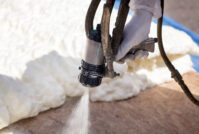look what we did!
Category: Innovation Bonds
Polyurethane in Boat Hulls Can Provide a Quieter, Safer and More Comfortable Ride
When it comes to spending a leisurely summer day out on the water, polyurethane plays many important roles. For example, you might find polyurethane in lifejackets and cushions that can be used as flotation devices. You might spot it in a boat’s engine, helping to insulate wires or dampen sound. But, one vital place you may not think to look is in the hull of your craft — the portion of the boat that rides both in and on top of the water. Here, polyurethane can be found in various forms of rigidity, helping your craft achieve and maintain buoyancy in the water.
A Key Feature in New Boat Designs
The inclusion of polyurethane foam on the hull of a boat is not a new design feature. But, the inclusion of additional polyurethane foam in the dead space of the hull — areas too small or hard to reach for use as storage or living space — is new. As of late, manufacturers have begun placing polyurethane foam in dead space to help improve the boat’s flotation properties in an emergency event. Should your vessel begin to take on water, the polyurethane foam in the dead space can provide increased buoyancy, helping the boat stay at the surface for longer. Although partially submerged, the boat should stay afloat for longer, giving help more time to arrive.
Keeping Brightwork Bright
Polyurethane is also used to keep the finish on wooden boats looking good and lasting longer. PU coatings can be applied to exposed wooden surfaces, known in the yachting world as “brightwork,” to create a glossy surface that helps repel water, resists corrosion and protects from scratches, stains and UV damage.
Installing Floatation FoamOne aspect of boating maintenance that may be familiar to avid do-it-yourselfers is the use of floatation foam. Almost always comprised of polyurethane, flotation foam can be found in various forms of rigidity. It can also go on the inside and the outside of the hull. As the name suggests, flotation foam is used to improve the flotation properties of a vessel, but it can also be used for thermal insulation and to dampen engine noise. There are a range of after-market flotation foam products from pourable foams to closed-cell foam sheets. By helping to increase buoyancy, the application of floatation foam can be a smart way to make old boats safer. It can also be used to improve comfort even on newer boat models.

























